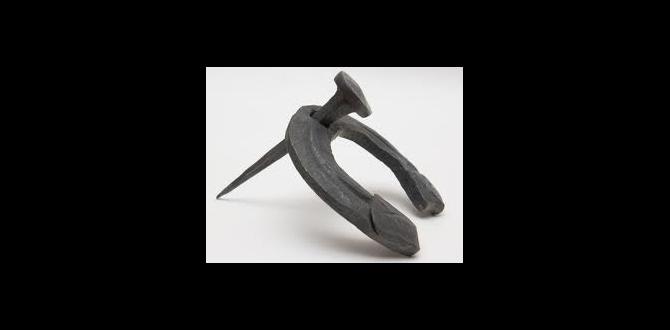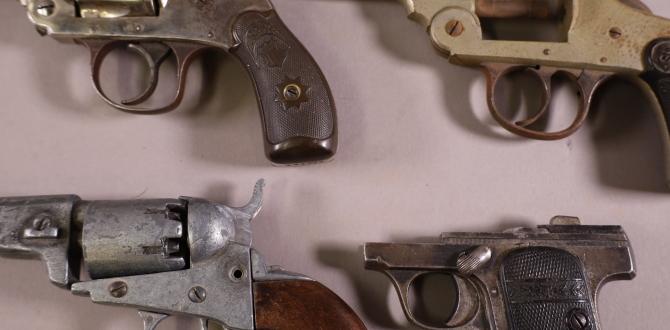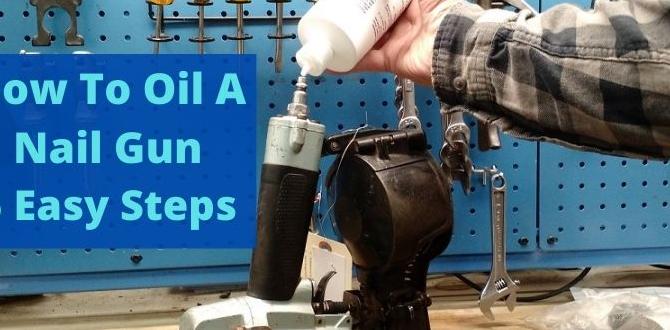Imagine you’re about to hang a favorite poster on your wall. You grab a push pin, but oh no, it’s too small. This is a lot like choosing the right brad nails for your baseboard. Tiny nails might not hold it in place. But trouble arises if they’re too long. What length brad nails for baseboard do you need? This can puzzle even the best DIY fans. You want your baseboard to stay in place, looking neat and tidy. The right nail size is crucial! Did you know the type of wall material can make a big difference? Let’s dive in and uncover which brad nail size suits your baseboard like a glove!
Table of Contents
Choosing The Right Brad Nails Length For Baseboards

What Length Brad Nails for Baseboard?
Choosing the right brad nail length for baseboards can seem tricky, but it’s simple when you know the basics. Most often, people use 1.5 to 2-inch nails for baseboards. Why? Because these sizes hold the baseboard firmly to the wall without splitting the wood. Imagine fastening a puzzle together; the pieces should fit snugly without breaking. If you use too long or too short nails, you might face issues. Also, remember that walls and materials may vary, so adjust your choice accordingly. Need some fun facts? Brad nails are named after their thin, gentle structure perfect for delicate jobs. So, next time you’re securing a baseboard, think of it as a delightful puzzle waiting for the perfect piece!
Factors to Consider When Choosing Brad Nail Length for Baseboards
Baseboard thickness. Material composition of the baseboard. Wall structure and considerations.
When picking brad nail length for baseboards, think about the thickness of the baseboard. Thick boards need longer nails. Also, check what the baseboard is made from. Is it wood or MDF? This matters. The wall is important too. Studs behind the wall help secure the baseboard. Make sure nails reach the studs.
How do you know the right length of brad nails for thick baseboards?
Use longer nails for thick baseboards. Longer nails give more hold. If the baseboard is over 1/2 inch thick, aim for 2-inch nails.
Recommended Brad Nail Lengths for Various Baseboard Sizes
Suggested lengths for thin baseboards. Optimal nail size for standard baseboards. Appropriate lengths for oversized or thick baseboards.
Imagine your baseboard as a delicate pastry. If it’s thin, you wouldn’t use a giant fork—same goes for nails. For thin baseboards, experts nod in agreement: 1-inch brad nails will suffice. Now, for standard baseboards, think of Goldilocks’ porridge— 1.5-inch nails are “just right.” When faced with thick, bossy baseboards, channel your inner giant and reach for the 2-inch or larger nails. Choose wisely, and your walls will thank you!
| Baseboard Type | Suggested Brad Nail Length |
|---|---|
| Thin Baseboards | 1 inch |
| Standard Baseboards | 1.5 inches |
| Thick Baseboards | 2 inches or more |
How to Properly Install Baseboards Using Brad Nails
Necessary tools and materials for installation. Stepbystep installation process. Common mistakes to avoid.
Let’s talk about baseboards and brad nails. Can you imagine a world without baseboards? Rooms would feel incomplete, like a pizza missing its cheese. To make sure yours are snug, let’s gather some essential tools like a hammer, tape measure, and brad nails that are 1.5 inches long. Next, make sure to follow these steps for a smooth installation.
First, measure the wall length and cut baseboards accordingly. Fit them gently, and use a nail gun for those crafty brad nails. Ensure a nail every 12-16 inches for a solid grip. Avoid dodgy angles—nail straight and true!
Now, let’s prevent goof-ups! Ensure the baseboards are level, and avoid disconnect corners. A friend once tried painting, only to realize nails were missing—oops! So, tap away confidently.
| Tools | Purpose |
|---|---|
| Hammer | To adjust and secure baseboards |
| Tape Measure | For measuring wall and baseboard lengths |
| Nail Gun | To insert your trusty brad nails |
With these steps, your baseboards will sing in harmony with your walls. Remember, confidence is key, like nailing in front of a live audience—minus the applause.
Pros and Cons of Using Brad Nails for Baseboard Installation
Advantages of using brad nails. Potential drawbacks and how to address them.
When installing baseboards, brad nails can be a handy choice. They slide in with ease, causing minimal damage. Think of them as the stealthy ninjas of the nail world! They hold baseboards firmly and leave tiny holes, which makes painting a breeze.
On the flip side, these nails are a bit less strong than their bigger brothers. If your baseboard is as heavy as a sumo wrestler, you might need more support. To overcome this, consider using nail glue or pairing brad nails with finishing nails. This double-team effort can ensure a strong grip, even for the most stubborn baseboards.
| Pros | Cons |
|---|---|
| Minimal damage | Less strength |
| Easy to fix mistakes | Not for heavy baseboards |
| Great for painting | Sometimes needs extra support |
Expert Tips for Seamless Baseboard Installation
Tips for ensuring a secure and durable fit. Strategies for hiding nail holes and achieving a polished finish.
When installing baseboards, precise nail selection is essential. Brad nails of 1.5 to 2 inches are often ideal for getting a solid grip without hitting plumbing or wiring. To guarantee a polished finish, experts recommend applying a dab of wood filler over nail holes, sanding it smooth, and painting over. This makes your baseboard look smooth and sleek. A fun fact? Silly putty can sometimes work as a quick fix for tiny nail holes (but don’t tell the professional carpenters!).
| Tips | Benefits |
|---|---|
| Use 1.5 to 2-inch brad nails | Secure fit without deep penetration |
| Wood filler on holes | Hides nail marks for a smooth look |
| Sand and paint over | Ensures a sleek, professional finish |
Doing it right ensures that your baseboards not only stay in place but also look like they’re straight out of a magazine. Remember, every detail counts, and sometimes, humor helps—like knowing there’s a craft project lurking behind every nail hole!
Frequently Asked Questions on Baseboard Installation
Addressing common concerns regarding nail size and placement. Troubleshooting tips for installation issues.
There are some questions many folks have about putting up baseboards.
What nail size is best for baseboards?
Using 2-inch brad nails is a good idea because they hold the baseboards well. They are long enough to grip, but not too long to split the wood.
How do you fix baseboard issues?
If nails pop out or boards are loose, check the placement. Make sure the nails hit the wall studs. If gaps appear, apply caulk for a smooth finish.
What’s the best way to nail baseboards?
Nail at the top and bottom edges. It helps the baseboard sit flat against the wall. Try to nail into the studs for a firm hold.
Quick Tips
- Use 2-inch brad nails for stability.
- Nail in the corners first for better alignment.
- If boards bend, use a level to straighten them.
Did you know even tiny mistakes can cause big problems later? So, taking your time when lining things up helps a lot!
Conclusion
Choosing the right brad nails for baseboard is important. Usually, 1.5 to 2-inch nails work best. They secure the baseboard well without splitting it. Always consider the baseboard’s thickness before nailing. Practicing on scrap wood can help you decide the best length. For more tips on nailing techniques, explore DIY guides or ask an adult for help.
FAQs
What Factors Should Be Considered When Choosing The Length Of Brad Nails For Installing Baseboards?
When choosing brad nails for baseboards, think about the wall’s thickness. The nails need to be long enough to go through the baseboard and into the wall. You also want them not too long, so they don’t poke out the other side. Also, consider the thickness of the baseboard itself. A good length usually keeps everything tight and in place.
How Does The Thickness Of The Baseboard Influence The Length Of Brad Nails Needed For Installation?
Thicker baseboards need longer brad nails. If the nail is too short, it won’t hold well. Imagine trying to stick a thin peg into a thick piece of wood. Longer nails ensure the baseboard stays attached to the wall. Always choose nails that are longer than the baseboard’s thickness.
Are There Specific Brad Nail Lengths Recommended For Different Types Of Wall Materials (E.G., Drywall, Plaster) When Installing Baseboards?
Yes, there are different nail lengths for different walls. For drywall, use nails that are 1.5 inches long. If you have plaster walls, use slightly longer nails, around 2 inches. This helps keep the baseboards secure and in place. Always make sure the nails go into the wall studs (strong parts) for extra hold.
What Are The Consequences Of Using Brad Nails That Are Too Short Or Too Long When Attaching Baseboards?
If we use nails that are too short, the baseboards might fall off. Short nails won’t hold the wood tight. If the nails are too long, they can stick out or damage the wall. This doesn’t look nice and can hurt if you touch it. So, it’s important to pick the right size nails.
Can The Finish Or Style Of The Baseboard Impact The Choice Of Brad Nail Length, And If So, How?
Yes, the style or finish of a baseboard can affect nail length choice. Thicker or heavier baseboards may need longer nails. Longer nails help hold the baseboard securely to the wall. Fancy designs sometimes require shorter nails to avoid damage. Always choose the right nail length to make sure your baseboard stays up safely.







